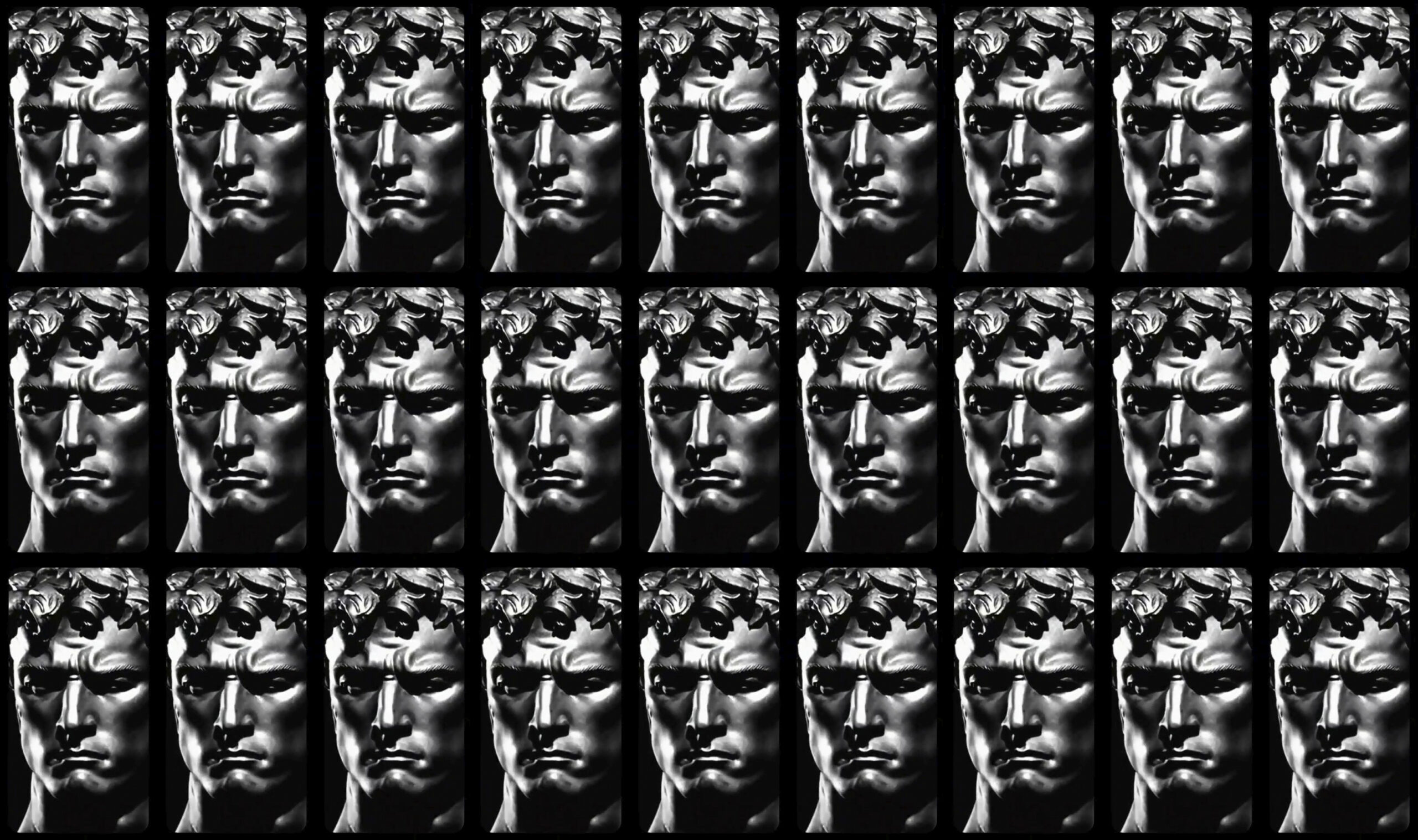19.9.2025–8.3.2026
The Finnish Museum of Photography
The Cable Factory, Kaapeliaukio 3, Helsinki
The exhibition Invisible Race opens this September at the Finnish Museum of Photography, showcasing the work of Netherlands-based artist duo Ana Zibelnik and Jakob Ganslmeier, alongside other international artists. The Institute is supporting their visit to Helsinki for the exhibition and its curated programme.
Invisible Race, a group exhibition by the Finnish Museum of Photography looks at the role of photography and visual culture in the creation of a racialised understanding of humanity, and the effects that photography has had on upholding racist societies.
About the artists
Jakob Ganslmeier (1990) and Ana Zibelnik (1995) are an artist duo who collaborate on photography and video projects that centre on youth identity formation, particularly the influence of extreme ideologies on young people. They are interested in dismantling the visual representation of radical ideologies and how visual arts can counteract radical political narratives and increase sensitivity to social issues with conflicting perspectives. Their works were exhibited at FOAM Museum Amsterdam, Museum of Modern Art Ljubljana, Brandenburg Museum of Modern Art Cottbus, and other venues.
Visit Jakob Ganslmeier’s website.
Visit JAna Zibelnik’s website.
Featured work
Jakob Ganslmeier & Ana Zibelnik
BEREITSCHAFT
Video sculpture
12:12 min
Jakob Ganslmeier’s and Ana Zibelnik’s video sculpture BEREITSCHAFT illustrates how fitness ideals and seemingly harmless visual expressions spread on social media can be linked to misogyny and the ideologies of the far right and white supremacy.
About the exhibition
In recent years, racist political parties and movements have been on the rise in the Nordics, Europe and North America, making racism once again a topic of mainstream social and political discourses. However, Whiteness is still rarely part of these conversations, even though it is an ideal against which all other races are compared and which we all have internalized. In the Nordic countries, being White has been an implicit part of the national identity. It has shaped the way we look at and understand the world so much that it has become synonymous with our understanding of what it is to be human. Whiteness functions as a way to justify the uneven distribution of power and resources among people. Thus, in order to work towards a more equitable world, it is crucial to make Whiteness visible.
As memory organizations, museums hold a vital role in shaping the ways we understand the societies we inhabit. By collecting and archiving the national photography collection of Finland, the museum continuously creates an image of this country’s history. Some artists in the show have addressed the ways in which Whiteness impacts archives, and how it shows up in the collection of the Finnish Museum of Photography. In the show they approach Whiteness both directly and indirectly, looking at how it manifests in social media, in everyday interactions, notions of nationalism, beauty ideals, and the stories we tell and the ones that we don’t.
Invisible Race shows that the way racism is generally looked at is inherently flawed. In a racist society, there is no outside; We are all affected by the hierarchical relations of power that stem from the notion of race. That is why it is crucial to understand the workings of Whiteness and the havoc it has wreaked upon this world. Photography, video and archives all hold a pivotal role in the normalisation of White supremacy. However, as tools for producing knowledge and memories, they are also vital in its resistance, and in recreation of a decolonised, anti-racial understanding of the world.
Artists in the exhibition: Tayo Adekunle, Sim Chi Yin, Yujie Zhou, Minna Henriksson, Ima Iduozee, Uwa Iduozee , Nayab Ikram, Arthur Jafa, Kahlil Joseph, Raakel Kuukka, Rene Matić, Zanele Muholi, Karl Ohiri, Elham Rahmati, Lada Suomenrinne, Ana Zibelnik and Jakob Ganslmeier.
The exhibition has received a state grant from the Finnish Heritage Agency and is supported by the Saastamoinen Foundation.
Visual Compass – Workshop with Ana Zibelnik and Jakob Ganslmeier
20.9.2025, 14:00–16:00.
How do images shape the way we perceive the world and ourselves?
Artists Ana Zibelnik and Jakob Ganslmeier invite participants to explore the forces and impacts of visual culture. In the workshop, participants will collectively create a visual compass – a map used to examine the influence of memes, symbols, and digital imagery. Together we will discuss how humor, images, and trends can simultaneously build and disrupt communities, and how visuality can function as a tool for social change.
The workshop provides a space for discussion and critical reflection:
- How can humour and memes both entertain and cause harm?
- In what ways do symbols and visual trends reinforce or challenge identities?
- How can images be used as instruments of activism and social transformation?
Who is it for: The workshop is open to everyone – artists, students, researchers, and anyone interested in visual culture.
Capacity is limited to 30 participants.
Admission with a museum ticket, discounted ticket or concession ticket.
Language of the workshop: English
Participation: With a museum ticket or Museum Card. Note: free admission groups.
Note: The workshop may include images and symbols that can evoke strong reactions. The aim is to create a safe and respectful environment for discussion.
For more information about the accessibility of the museum, visit the museum website.
Cover image: Jakob Ganslmeier & Ana Zibelnik – Bereitschaft, 2024.

